A Love Letter to Paris at Christmas time
My favourite Hotel & Restaurant; window shopping & a roof-top terrace view; a small Museum; a Bridge across the Seine, Notre-Dame de Paris Cathedral and New Year’s Eve Fireworks with a Vin Chaud
C’etait un Rendezvous, Claude Lelouche, 1973
Introduction:
I have started to write this article on Christmas Eve. All the preparations for Christmas are complete. We will eat ham, colcannon and madeira gravy together for supper later. Perhaps a little trifle if we have room.
If our energy levels and the weather prevail, we may walk to our local church for 30 years, to celebrate Midnight mass, for one last time on Christmas Eve. If not, we will definitely go early on Christmas Day morning.
I pour myself a glass of chilled champagne (Veuve Cliquot is my favourite).
This is a love letter to Paris. Between Christmas and New Year is one of my favourite times to be in the City of Light. From decades ago, when we were both young, penniless and full of hope in the early 1990s; through the challenges and turbulence in our middle years to now - as we consider “retirement”, change and possible new beginnings - Paris has always been our city, a place of love.
I so love Claude Lelouche’s short film C’etait un Rendezvous. It brings back many fond memories of multiple sojourns spent together in Paris:
When we walked under the Arc de Triomphe, searching to find the Irish embassy, to apply for an emergency replacement passport, the original stolen from Mr C’s back trouser pocket.
Photo: author, Arc de Triomphe and the Champs-Élysées, from the Eiffel Tour 2019
Tempura vegetables (very sophisticated at the time) at the Virgin store top floor restaurant (now long closed) on the Champs-Élysées, after we had spent hours devouring and delighting in the extensive French film VHS and dvd collections.
On the banks of the Seine, in the Tuileries gardens, bathing tired, aching feet in a cool pond after walking for hours through the City of Light.
Photo: author, The Louvre & the Tuileries gardens from the Eiffel Tour. Musée de l'Orangerie is in the bottom left hand corner by the river Seine 2019
the Louvre museum- the queue and the crowds.
Photo: author February 2008
A visit to the Opéra Garnier, where bees produce honey in the hives on the roof, to experience a ballet, sitting in a box with a view. The Opéra is one of the biggest theatres in the world and is almost as high as the towers of Notre-Dame de Paris Cathedral.
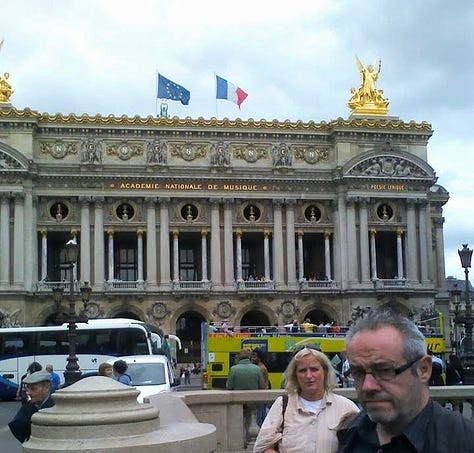
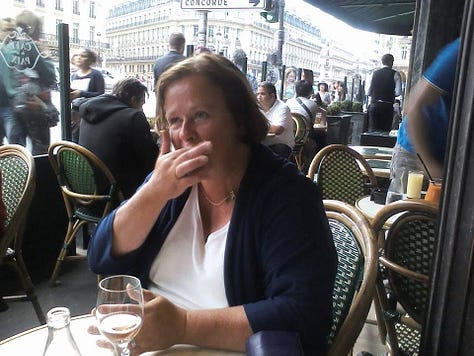
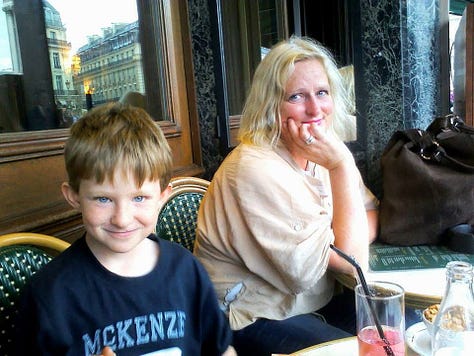
Photos: author, Enjoying refreshments at Café de la Paix, in front of the Opera Garnier
Painting: author, Bees in the Honey Hive, Acrylics
Pigalle: In 1995, taking my mother to dinner and a cabaret show at the legendary Moulin Rouge for her 60th birthday, the same age I am now, to watch the ladies in feathers, sequins and rhinestones, dance the legendary French Cancan and a horse trot onto the stage (yes, really!) and again more recently in 2022,
Photo: moulinrouge.fr
with my husband and our now grown up nephew.
Photo: author July 2022
The cemeteries at Père-Lachaise and at the foot of Montmartre. Paying our respects to Oscar Wilde, Edith Piaf, Michel Legrand, Frédéric Chopin, Jim Morrison and Marcel Proust, author of À la recherche du temps perdu at Père-Lachaise and François Truffaut, André-Marie Ampère and Léon Foucault at Montmartre.
Playing Come On Baby Light My Fire by Jim Morrison and The Doors on the jukebox in a small cafe bar in the non-touristy part of Montmartre, a little giddy sipping the then ridiculously cheap red wine (me) and Kronenbourg (Mr.C).
Walking downhill together from La Butte - Montmartre hill, towards Les Grands Boulevards, on the long, historic market street Rue des Martyrs (now quite trendy): looking, smelling the aromas, stopping, tasting and buying from various food and bakery shops and stalls.


Photo: author Market stalls, Rue des Martyrs, Christmas 1990 Photo: author, Sacré-Cœur and Montmartre, from Boulevard Haussmann, Notre-Dame de Loretta in the foreground, 2019
The night Ireland got as far as the World Cup quarter finals in Italia 90, Saturday 30th June, and were beaten 1-0 by Italy - the same night when Mr C did not sleep with worry. He was forced to use his green trouser braces (remember them? - they were a fashion thing in 1990) to lock our hotel bedroom door in St. Michel (my fault - and I slept like a baby).
One Easter in Paris, feeling obliged to confess to my husband that the green Thai curry that I had cooked the previous evening wasn’t actually made with chicken, but rabbit - another Nigella Lawson recipe from Feast (Food that Celebrates Life) 2004 - because at every Metro station we stopped at, there was a huge advertisement poster for Cassegrain haricot verts with a cute Easter rabbit and I felt so guilty.
Photo: author
Our young, adopted son thought this was so funny - he loved the macabre - and would not hesitate to sample and taste such French delicacies as des escargots, des cuisses de grenouilles, langue de boeuf and andouillette sauce moutarde made from intestines. All so that he could tell his classmates and shock them.
Memories and special places spent together in Paris. I could go on… but with Paris, it’s wise to not do too much on any one visit. I have made this mistake on more than one occasion.
As Anthony Bourdain wrote in World Travel: An Irreverent Guide:
The absolute worst thing to do when you come to Paris is plan too much. Eiffel Tower, Notre-Dame, Arc de Triomphe, stand in line for hours to experience what everybody says you have to. Me? I like to take it easy in Paris, especially if I’m only in town for a few days. Most of us are lucky to see Paris once in a lifetime. Make the most of it by doing as little as possible. Walk a little, get lost a bit, eat, catch a breakfast buzz, have a nap, try and have sex if you can, just not with a mime. Eat again. Lounge around drinking coffee. Maybe read a book. Drink some wine, walk around a bit more, eat, repeat.
The places and memories I share here took place on multiple trips to Paris, over a period of thirty years. We have been fortunate that living in Kent, England, we have been able to either catch a cheap return Eurostar train to Paris from Ashford (until the pandemic) or jump in the car, catch a ferry from Dover and drive to Paris.
Photo: author - a Eurostar ticket from a St Valentine’s trip to Paris
Choose a few places and things to do - and then savour the Parisian experience - lingering over a pavement coffee - watching people and the world go by.
Today, I share with you our favourite Parisian hotel and restaurant, conveniently just around the corner from each other; one decadent department store (with a roof-top terrace view); one bijoux art gallery, one romantic bridge and one historic church - all which are perfect in Paris at Christmas time, or indeed anytime of the year.
Hotel Chopin:
Hotel Chopin is next to the Musée Grevin, steps away from les Grands Boulevards and a ten minutes walk from the Opéra Garnier, in the Passage Jouffroy.
The Passage Jouffroy opened its doors in 1846. The passage was built entirely in iron and glass. Different wood types were used to hide the metal structures that support the glass roof.
Pencil drawing: author, Hotel Chopin
At the time, Paris was full of these romantic passages. The heated passages were designed to protect a wealthy clientele from the weather and to offer an ensemble of shops. Thus, the concept of a shopping mall was born, to be copied and recreated later in the Vittorio Emanuele Passage, Milan and other places, including London.
There were around 150 such passages in Paris, before the intervention of Baron Haussmann. Sadly today, only 24 passages have survived.
Hotel Chopin is one of the oldest hotels in Paris. Inaugurated in 1847, it was originally called the Hôtel des Familles. The hotel is part of Parisian history, with its wooden façade, which like the rest of the passage, has been classified as a historical monument since 1974.
The hotel took its current name in 1970, in homage to the Polish composer and pianist Frédéric Chopin, who lived in the Nouvelle-Athènes district, epicentre of the romantic salons in the 19th century, and walked through the Passage Jouffroy, on his way to visit the Pleyel piano showrooms. It is rumoured that Chopin arranged to meet George Sand in one of the hotel’s rooms.
As you enter Hotel Chopin, there is a very soft yellow-orange light, emanating from the lampshades and reflecting off the walls. There are chesterfield sofas and armchairs, upon which you might meet the house cat. Appropriately, there is a grand upright piano and a bust of Chopin.
The two star hotel offers 35 romantic, clean and comfortable rooms. Some of the rooms, like 310 where we have stayed, offer a magical view of the original lead rooftops of Paris. If you are looking for a modern, sleek 21st century international hotel with walk-in power showers etc, this is probably not the place for you. Hotel Chopin offers Parisian history and romance.
Hotel Chopin featured in the French film Mon Homme.
YouTube: A scene featuring Hotel Chopin, Mon Homme 1996 Bertrand Blier

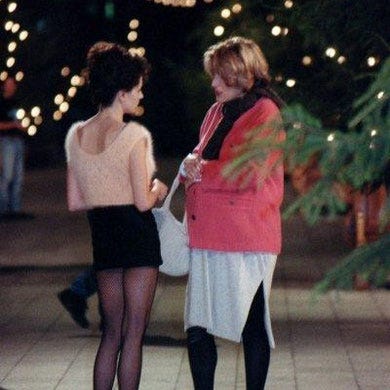

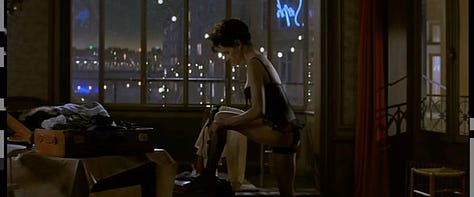




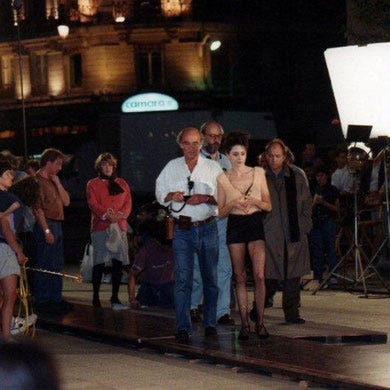
Photos: Base de données de films français
Image: Base de données de films français
Bouillon Chartier:
7 Rue du Faubourg Montmartre, 75009
This is my absolute favourite restaurant in Paris. It isn’t Michelin starred; it isn’t haute-cuisine and there are no reservations, so it is possible that you will have to queue.
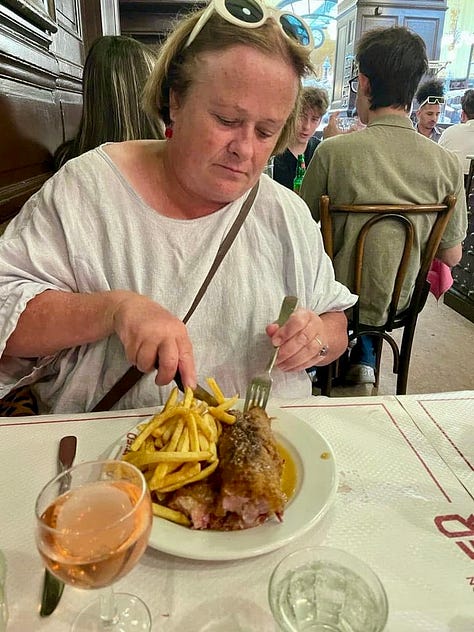
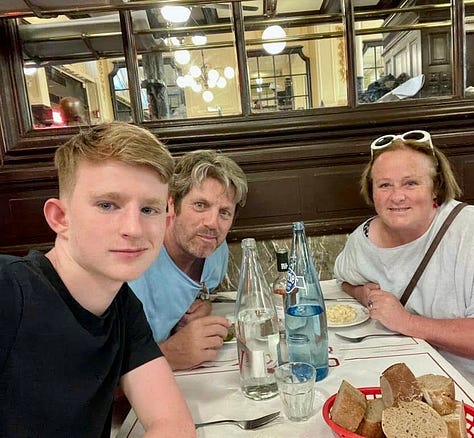
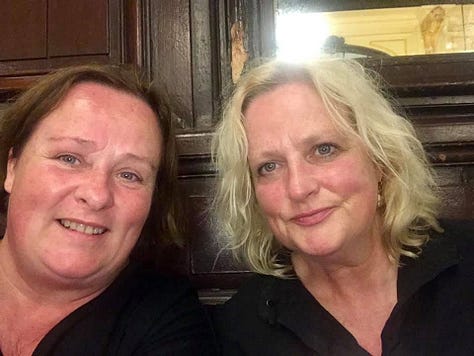
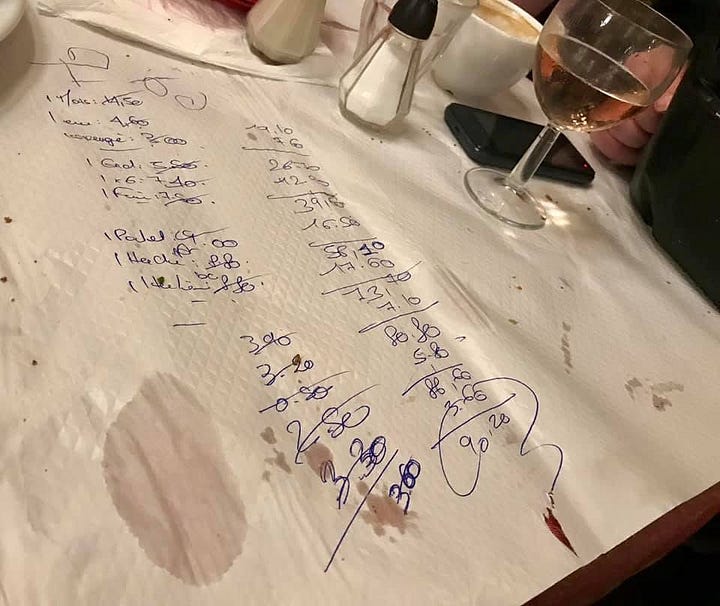

However, it is a traditional, historic restaurant, with atmosphere, offering authentic French brasserie dishes, at very reasonable prices. And it is just around the corner from Hotel Chopin, as I mentioned earlier.
The restaurant was established in 1896 by two brothers Camille and Frédéric Chartier, during the Industrial Revolution, at a time when many French workers moved from agriculture in the countryside to seek new employment in the city. A Parisian butcher from Les Halles market invented a beef broth known as "bouillon", which gave the restaurant its name. The purpose of Bouillon Chartier was to offer affordable, accessible hot meals to the workers -“Un repas digne de ce nom, à un prix modeste”.
The restaurant is in the Art Nouveau style, a vestige of the Belle Époque. There is a vast airy dining room, furnished with period brass, mirrors, hanging globe chandeliers, sculpted woodwork and red leather banquettes, topped with a light filled glass roof. A choreographed ballet of professional waiters, dressed in black jackets and white aprons, twirl in the aisles - providing an efficient yet polite service, jotting your order down on the paper tablecloths, with stubby pencils.
The restaurant is open seven days a week from 11 : 30 to midnight. All the French classics are on the menu, with daily specials.
Image: Bouillon Chartier Les Grands Boulevards
The food is good and I have enjoyed Œuf mayonnaise, céleri rémoulade, salad frisée aux lardons, terrine de campagne, potage de légumes, poireaux vinaigrette, des escargots, bœuf bourguignon, blanquette de veau, petit salé aux lentilles, poulet fermier, un poisson grillé ou rôti, frites, mousse au chocolat, Mont Blanc, une coupe de crème chantilly and des fromages on many occasions.
Bouillon Chartier is one of the city’s best bargains, but also great fun.
Galeries Lafayette - window shopping and a roof-top terrace with a view:
This elegant and opulent Parisian department store was established in 1893, by two cousins from the Alsace, Théophile Bader and Alphonse Kahn.
At Christmas, it looks especially beautiful, all lit up with window displays on the outside and a grand, tall Christmas tree below the stunning central glass roof dome.
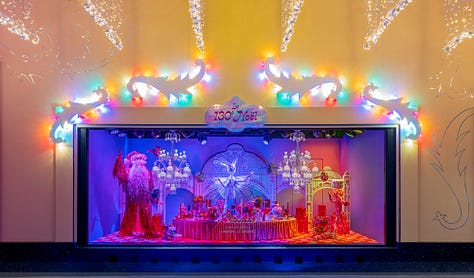

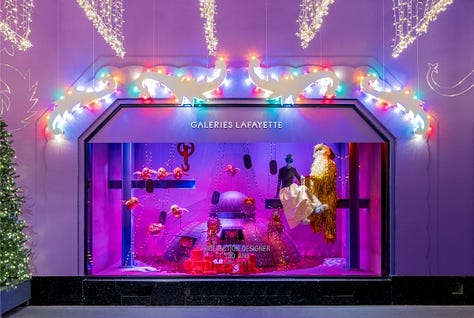
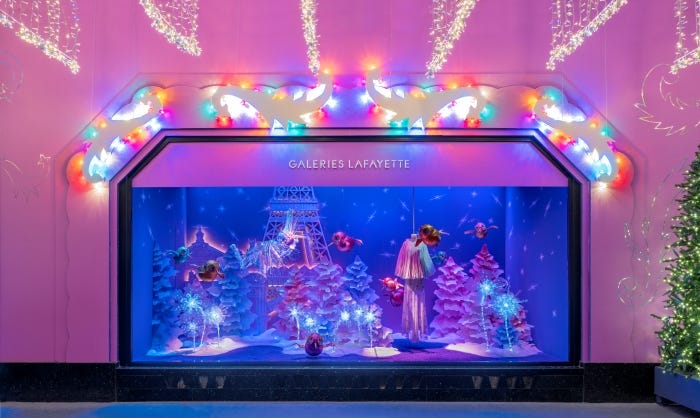
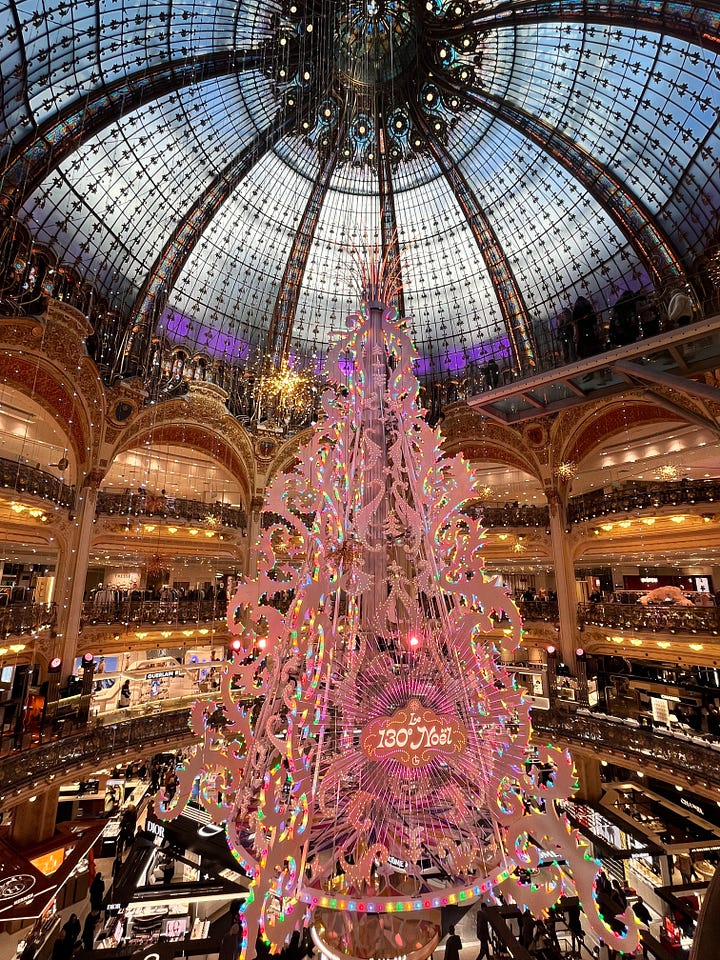
Even if you buy nothing, it is a joyful experience to enter and wander from floor to floor, taking in the beautiful displays. Though I did actually buy our teenage nephew a €100 Kenzō Takada long sleeved T - shirt here a few years ago. I don’t know what came over me - as I wouldn’t dream of spending €100 on a T - shirt for myself. However, it was worth it - to see the big smile on his face as the glamorous shop assistant folded the T - shirt; wrapped it elegantly and he took possession of his Kenzo package.
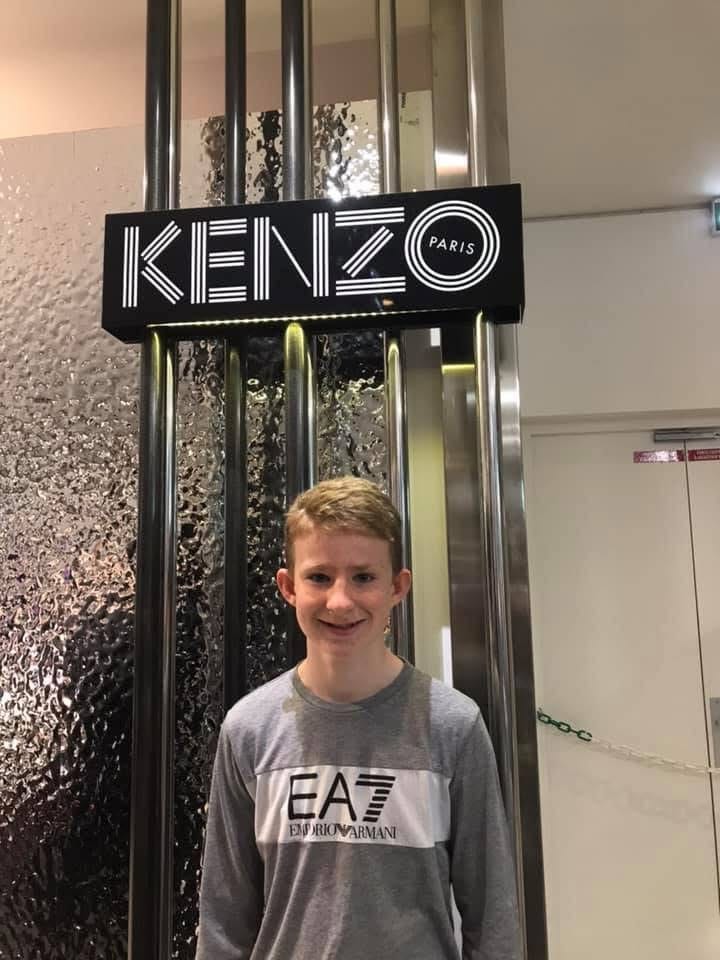
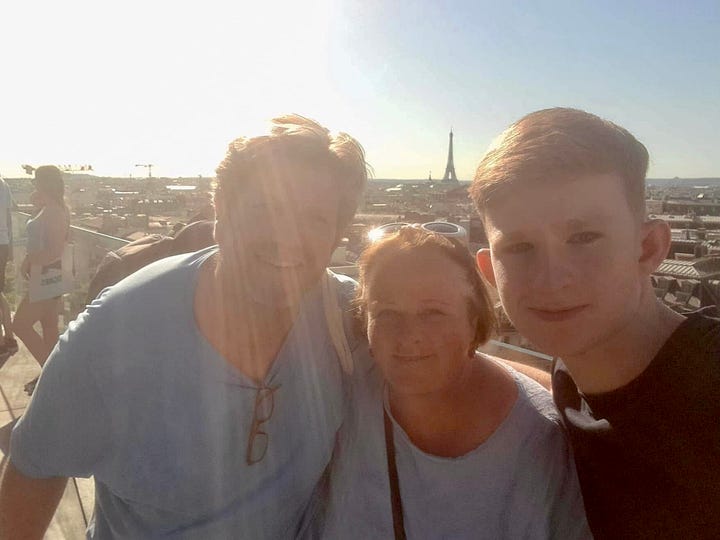
There is a delicious food hall in Galeries Lafayette and on the top 8th floor, there is a magnificent roof terrace where you can pause, with refreshments, to enjoy the glorious free views of the Opéra Garnier, Sacré Cœur, Notre-Dame de Paris Cathedral and the Eiffel Tower in the distance. Sunset is a particularly good time to be there.
Check the website for roof-top terrace opening times.
Musée de l'Orangerie & Monet’s Water Lilies:
I can’t recommend this tiny art gallery enough. Musée de l'Orangerie is on the banks of the river Seine, in the west corner of the Tuileries Palace gardens, on the Place de la Concorde, near the Concorde metro station and not far from the Louvre and the Musee d’Orsay.
The beauty of this art gallery is its small size. Upstairs simply contains Monet’s eight Water Lily panels.
Downstairs, you can find a small collection of Paul Cézanne, Henri Matisse, Pablo Picasso, Pierre-Auguste Renoir, Henri Rousseau, Alfred Sisley, Maurice Utrillo, and others.
A gift from Claude Monet to France, given the day after the armistice of November 11, 1918, the eight Water Lilies (Nymphéas) paintings were installed and displayed according to his design in the Orangerie in 1927, a few months after his death.
The paintings were Monet’s response to the atrocities of World War One. They are arranged in two elliptical rooms. Monet required skylights for observing the paintings in natural light.
Musee-orangerie.fr describes Monet’s composition:
These compositions are all the same height (6.5 ft/1.97m) but differ in length so that they could be hung across the curved walls of two egg-shaped rooms. The artist left nothing to chance with this set of paintings that he had long pondered over…
…The whole set is one of the most vast and monumental creations in painting made in the first half of the 20th century and covers a surface area of 200m2 (2,153 sq ft ). The dimensions and area covered by the painting envelop the viewer in over nearly 100 linear meters (328 linear feet), where a landscape of water punctuated with water lilies, willow branches, reflections of trees and clouds unfolds, creating “the illusion of an endless whole, of a wave with no horizon and no shore”, as Monet put it. The paintings and their layout echo in the orientation of the building, as the placement of scenes with sunrise hues are to the east and those with hues of the sunset are to the west. Thus, the representation of a continuum in time and space is materialised. In an equally suggestive way, the elliptical shape of the rooms draws out the mathematical symbol for infinity.
Monet’s eight Water Lilies panels consist of:
Reflets d'arbres (tree reflections)
Claude Monet 2024 © Établissement public du musée d'Orsay et du musée de l'Orangerie - Valéry Giscard d'Estaing Tous droits réservés
Les Nuages (the Clouds)
Claude Monet 2024 © Établissement public du musée d'Orsay et du musée de l'Orangerie - Valéry Giscard d'Estaing Tous droits réservés
Le Matin clair aux saules (clear morning with Willows)
Claude Monet 2024 © Établissement public du musée d'Orsay et du musée de l'Orangerie - Valéry Giscard d'Estaing Tous droits réservés
Les Deux Saules (the two willows)
Claude Monet 2024 © Établissement public du musée d'Orsay et du musée de l'Orangerie - Valéry Giscard d'Estaing Tous droits réservés
Soleil couchant (setting sun)
Claude Monet 2024 © Établissement public du musée d'Orsay et du musée de l'Orangerie - Valéry Giscard d'Estaing Tous droits réservés
Reflets verts (green reflections)
Claude Monet 2024 © Établissement public du musée d'Orsay et du musée de l'Orangerie - Valéry Giscard d'Estaing Tous droits réservés
Matin (morning)
Claude Monet 2024 © Établissement public du musée d'Orsay et du musée de l'Orangerie - Valéry Giscard d'Estaing Tous droits réservés
Le Matin aux saules (morning with willows)
Claude Monet 2024 © Établissement public du musée d'Orsay et du musée de l'Orangerie - Valéry Giscard d'Estaing Tous droits réservés
I strongly recommend that you click on the link below, which takes you on a brief 3 D virtual tour of Monet’s Water Lilies in the two elliptical shaped rooms, representing infinity, as Monet wished you to view them.
I took our adopted son to experience Monet’s Water lilies here. He must have been about seven or eight years old: bright, very curious, and with a great capacity for mischief. Being prudent, I emphasised, before we entered the gallery, that he mustn’t touch the water lily paintings, or he might be arrested by one of the intimidating guards.
Well, lo and behold, a petite, elegant, elderly French lady with her silver hair in a soigné bun, fainted, collapsed and cracked her head against one of Monet’s paintings. She was bleeding from her forehead and there was a small blood smear on the Water Lilies. A posse of guards ran to help the little, old lady and the ambulance service arrived in what felt like minutes. Our adopted son just stared; eyes on stalks; mouth wide open. You couldn’t make it up.
Le Pont Neuf - a Bridge across the Seine:
You can find Pont Neuf by the western, downstream point of the Île de la Cité, the island in the middle of the river that was the birthplace of Paris.
“The new bridge” is actually the oldest bridge in Paris. It was inaugurated by King Henri IV in 1607, when he rode across it on a white horse. There is a statue of him on horseback off to the west side. The bridge took approximately 30 years to build due to interruptions caused by political unrest and the Wars of Religion.
The bridge consists of two separate spans, one of five arches joining the left bank to the Île de la Cité, another of seven joining the island to the right bank.
The bridge was originally decorated with 381 different mascarons (stone masks), featuring the heads of divinities from classical mythology, as well as satyrs. Historically, mascarons had played the role of protecting homes and neighbourhoods from evil spirits.
Le Pont Neuf was the first Parisian stone bridge that was not lined with houses. It had sidewalks for pedestrian traffic and semi-circular recessed areas. It became very popular with locals at the time it was built, who would enjoy strolling across the bridge, whilst merchants sold goods, dentists pulled teeth and jugglers put on shows.
It is my personal favourite Parisian bridge for two reasons. Firstly, on my first visit to Paris with Mr. C, we took an evening pleasure boat on a trip down the Seine. It was December and it was cold, so I enjoyed sipping a vin chaud (recipe later in this article), at the Taverne Henry IV afterwards.
Photo: author
Photo: author
The second reason that I love le Pont Neuf is because it was used in a scene with fireworks in that gorgeous French film Les Amants du Pont-Neuf.
YouTube: Les Amants du Pont Neuf (1991), starring Juliette Binoche & Denis Levant, directed by Leos Carax
Le Pont Neuf has also appeared in other artistic creations. In September 1985, Christo and Jeanne-Claude wrapped the bridge and its forty four street lamps in a sandstone-coloured fabric. The two-week environmental artwork installation attracted three million visitors.
Photo: https://www.facebook.com/share/p/fpSGKSfLHNYvai7m/?
In June 1994, le Pont Neuf was covered in 32,000 begonia flowers and ivy, commissioned by the Japanese fashion designer Kenzō Takada, as a gift to Parisians on Midsummer’s Eve.
Photo: https://www.facebook.com/share/isGGSg7f3m7LhmYv/?
Notre-Dame de Paris Cathedral:
Listen to the sweet sound of the bells of Notre-Dame de Paris Cathedral - not heard since the catastrophic fire in April 2019. I am so looking forward to hearing them ring again in Paris.
It took two hundred years to originally build Notre-Dame de Paris Cathedral. The first stone was laid in 1163. The cathedral is 130 m long; 48 m wide; its towers rising to 70 m high. Flying buttresses were used to reinforce the sides of this large medieval building. The 13 m diameter circular stained-glass rose window survived the terrible April 2019 fire.
In 1239, King Louis IX delivered what was reported to be Jesus’ Crown of Thorns to the cathedral. Henry VI, King of England, and Napoleon I were both crowned here. In 1944, General Charles de Gaulle attended a mass to celebrate the liberation of Paris.
Originally, inside the copper cockerel that stood on top of the weather vane at the top of the spire, there was a holy relic - part of the original crown of thorns. The original copper cockerel was badly battered from its fall during the April 2019 fire but was salvaged and will be displayed as a memorial of that night.
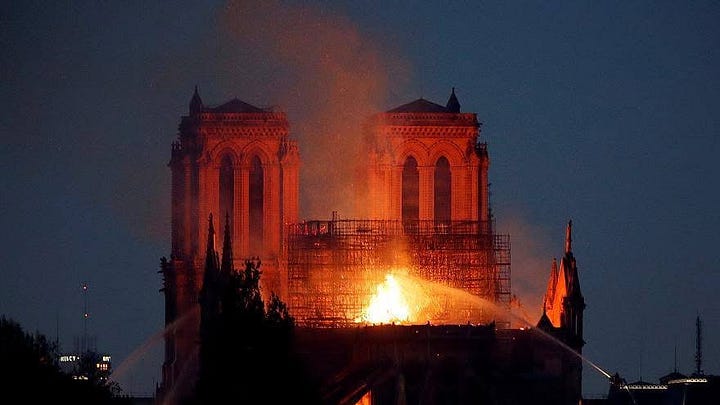
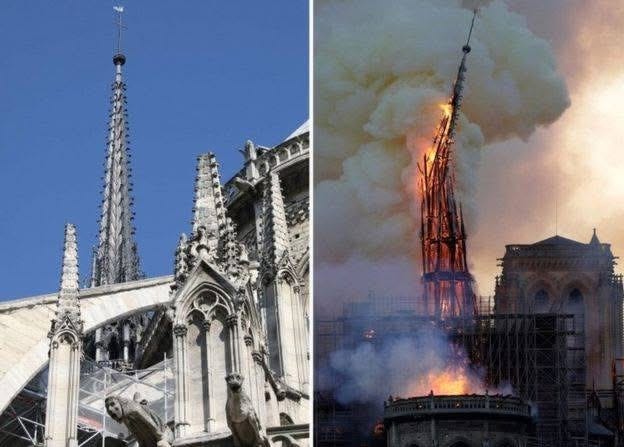
The replacement gold cockerel was hoisted into place in December 2023. It carries inside it the relics of two Parisian saints and a scroll naming all 2,000 restoration workers.
Photo: Emmanuel Macron Instagram 29/11/24 Macron's final site visit to the cathedral on November 29 2024. He was joined by an estimated 2,000 craftspeople, architects, carpenters, restorers, painters, roofers, foundry-workers, art experts, masons, sculptors, engineers, and technicians who worked together to make Notre-Dame shine again.
It carries symbolic meaning too. The cockerel is a symbol of French identity, of hope and resurrection—and in this case, since the architect Villeneuve gave his bird flame-shaped wings, of a cathedral rising from the ashes.
In front of the cathedral, on the esplanade, you can find the zero milestone. All across France, distances to Paris are measured from this point.


At Christmas time, I enjoy lighting a candle or two, in memory of my dead grandparents and relatives. Lighting a devotional candle can express thoughts or feelings that are sometimes difficult to express.
You can find out more information about Notre-Dame de Paris Cathedral, visiting times and services below:
Entry to Notre-Dame de Paris Cathedral is free and can be reserved online in advance, to avoid the queues. Sitting down during a mass can be a soothing experience, whether a believer or not. Isn’t it funny that even though the service is spoken in French, the rhythm of the prayers is so similar, whether in French or English. Or is that just me?
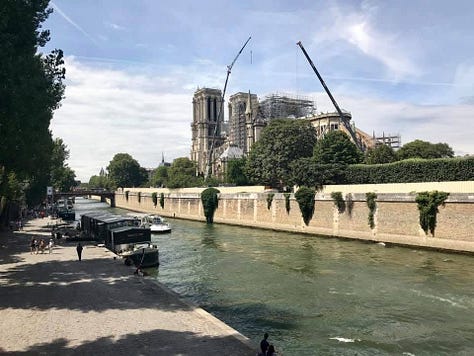
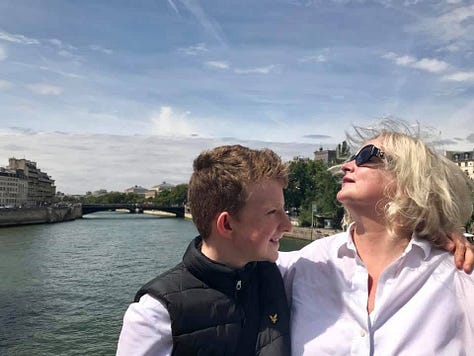

You can read more about Notre-Dame de Paris Cathedral’s restoration in Chris O’Brien’s recent illuminating article:
Photo: Christophe Petit Tesson/Pool via AP
Heather Stimmler from Secrets of Paris recently shared that Pope Francis refused President Macron’s invitation to attend the reopening ceremony. I wonder whether the Pope felt that the rebuilding and reopening had been hijacked for political purposes?
Photo: Emmanuel Macron Instagram 07/12/24 President-elect Donald Trump, President Emmanuel Macron and President Volodymyr Zelensky
You can read more from Heather about the grand re-opening ceremony of Notre-Dame Cathedral in
here: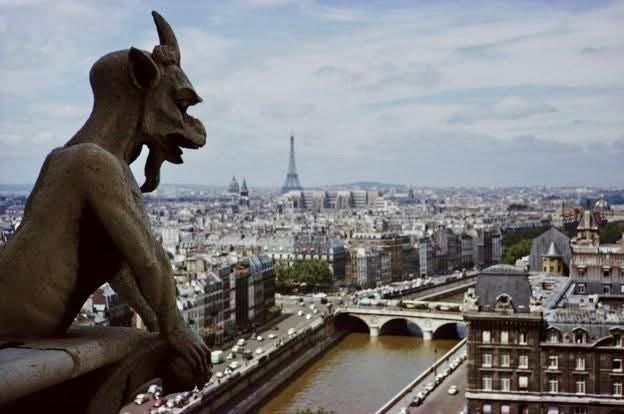
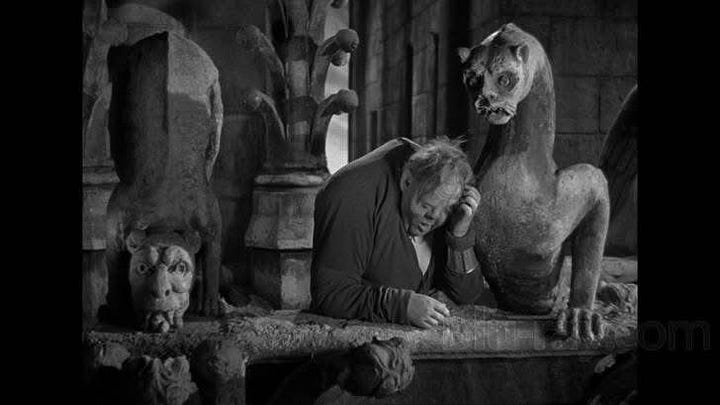
As a child, I was both fascinated with and horrified by the stone gargoyles of Notre-Dame de Paris Cathedral. Now, I didn’t actually visit France, Paris and Notre-Dame Cathedral until I was in my late twenties, but as a young child, I can remember reading a ladybird book with pictures of Notre-Dame Cathedral. The gargoyles hadn’t been “Disney-fied” at this stage. I think I just made up that word? I somehow thought that the water spouting out of the gargoyles’ mouths during rainfall represented the Devil, squeezing holy water out of you, sending you to Hell. Freud would have a field day with this, me thinks!
Montmartre Summit, Sacré-Cœur and New Year’s Eve Fireworks:
Photo: our nephew & godson July 2022
La butte - this is where Claude Lelouche’s short film C’etait un Rendezvous finishes, with the car driver meeting his lover at the top steps, in front of Sacré-Cœur basilica at sunrise.
Did you know that the mining of gypsum (a.k.a. plaster of Paris) began in the Gallo-Roman period, first in open air mines and then underground, and continued until 1860? The gypsum was cut into blocks, baked, then ground and put into sacks. Sold as montmartarite, it was used for plaster, because of its resistance to fire and water.
When Sacré-Cœur basilica was built between 1875 and 1914, there were so many holes in the rock from previous mining, that it resembled Emmental cheese. The engineers had to dig 80 m down and pour huge amounts of concrete for the pillars that support the basilica.
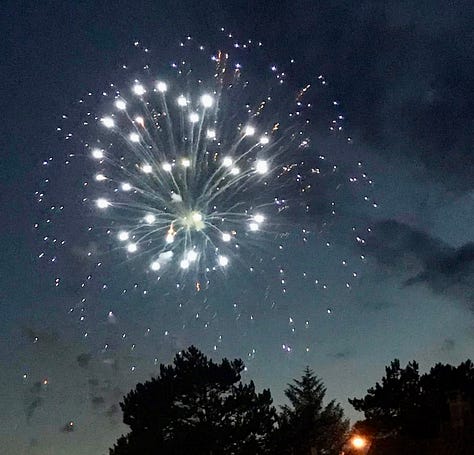


And this is where we celebrated New Year’s Eve 2003, taking the metro up as far as we could to Anvers and then continuing on foot up the steps. There is a magnificent view of the whole of Paris from the top. It was an unplanned, informal, ad hoc New Year’s Eve; celebrating with locals and tourists; warming our hands holding a vin chaud; dodging random rogue fireworks. It was perfect.
My Vin Chaud recipe:
Ingredients:
1 x 75 ml light & fruity red wine such as Beaujolais
300 ml cold water
175 g golden caster sugar
Pared skin of 1 lemon (ensure white pith is removed)
5 cm cinnamon stick
Method:
Add the cold water, sugar, lemon rind and the cinnamon stick to the red wine.
Slowly bring the liquid to a gentle simmer. Do NOT boil.
Now remove your saucepan from the heat and place a lid on to allow the aromas to infuse for 10 minutes.
Next remove the cinnamon stick and the lemon rind.
Ladle the warm drink into glasses. Add a slice of lemon, if desired. Enjoy.
Reflections and Best Wishes for 2025:
And so I finish writing this article just before New Year’s Eve. January, is derived from the Roman god Janus. He is usually depicted as having two faces - one looking forwards into the future; the second face looking back into the past.
Photo: The god Janus, beardless, Roman coin; in the Bibliothèque Nationale, Paris
I am conscious that what I write, how I experience and perceive Paris, through my eyes, are filtered and influenced by who I am. And you will see Paris through your own eyes. As Anthony Bourdain wrote in World Travel: An Irreverent Guide:
All of us, when we travel, look at the places we go, the things we see, through different eyes. And how we see them is shaped by our previous lives, the books we’ve read, the films we’ve seen, the baggage we carry.
I would like to wish You a Happy New Year, with good health, safety and contentment in 2025, wherever you and I are.
I will finish with the same Claude Lelouche film, but this time set to Northern Irish Snow Patrol’s haunting Open Your Eyes from 2006. This music video starts slightly later in Claude Lelouche’s short film, as the car turns from Place de la Concorde and then drives by the Musée de l'Orangerie on the left, along the bank of the river Seine, heading up towards the Louvre.
As I said when I started writing this article, this is a Love Letter to Paris - and to my husband Mr. C. Je t’aime mon amour, à l'infini et au-delà ♾️.
Photo: author, Older and Wiser perhaps
Thank You for reading Free-Styling @60.
Clicking the heart, sharing and/or commenting below all help other people find my work.
If you have enjoyed my writing and aren’t already a subscriber, please do sign up here - it’s free.





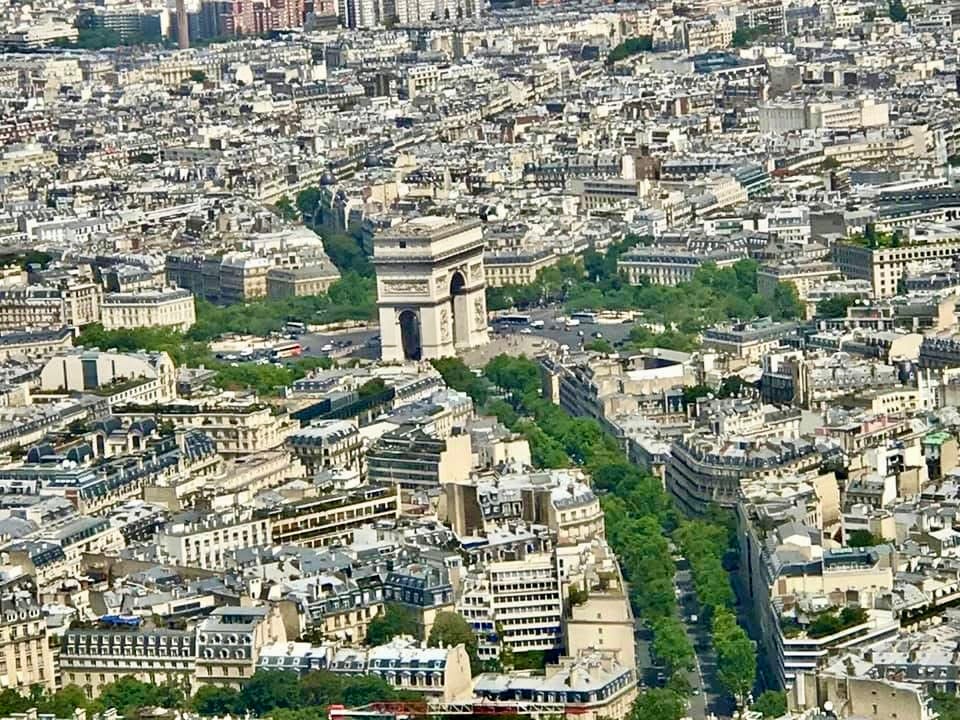

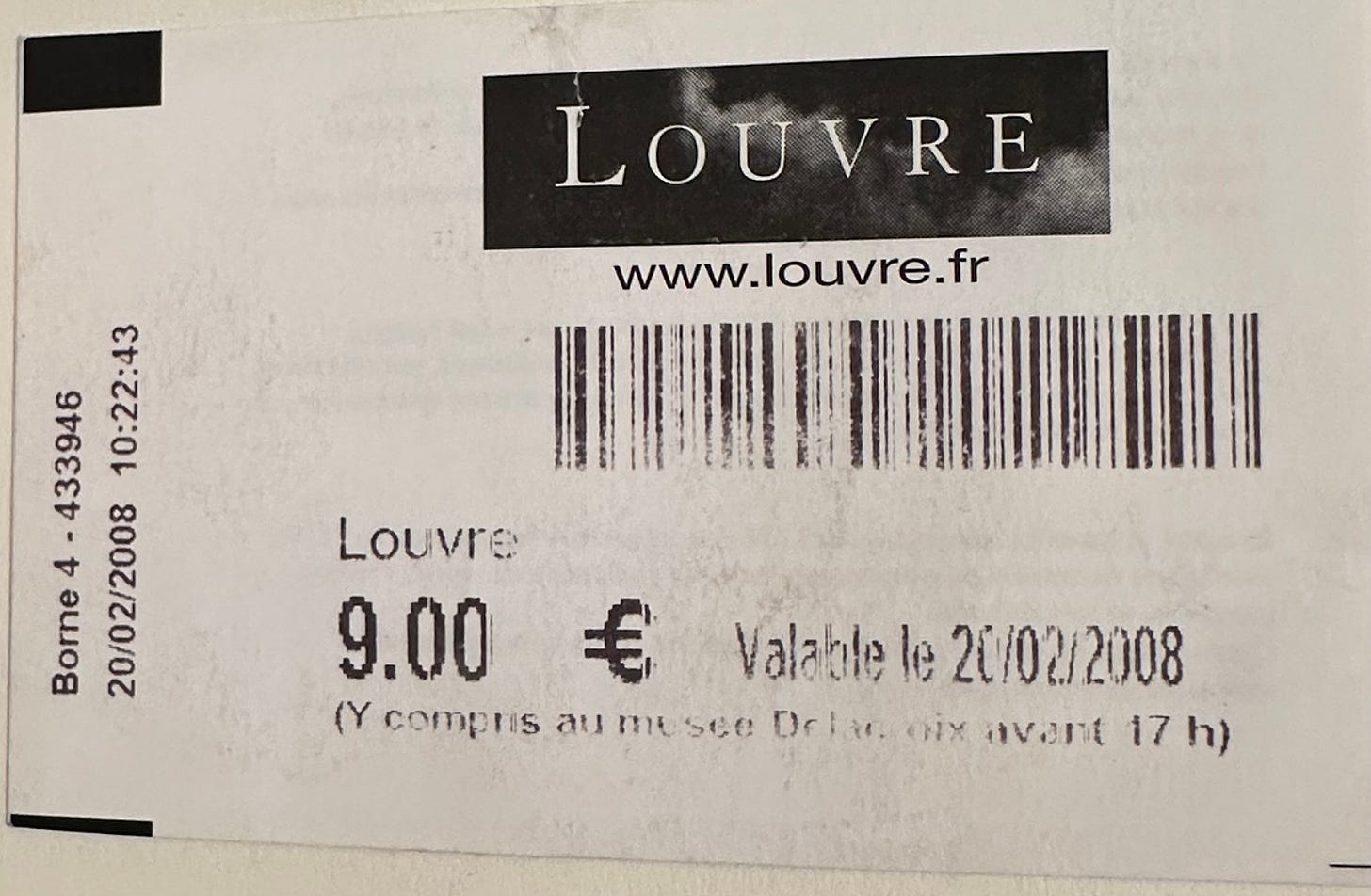
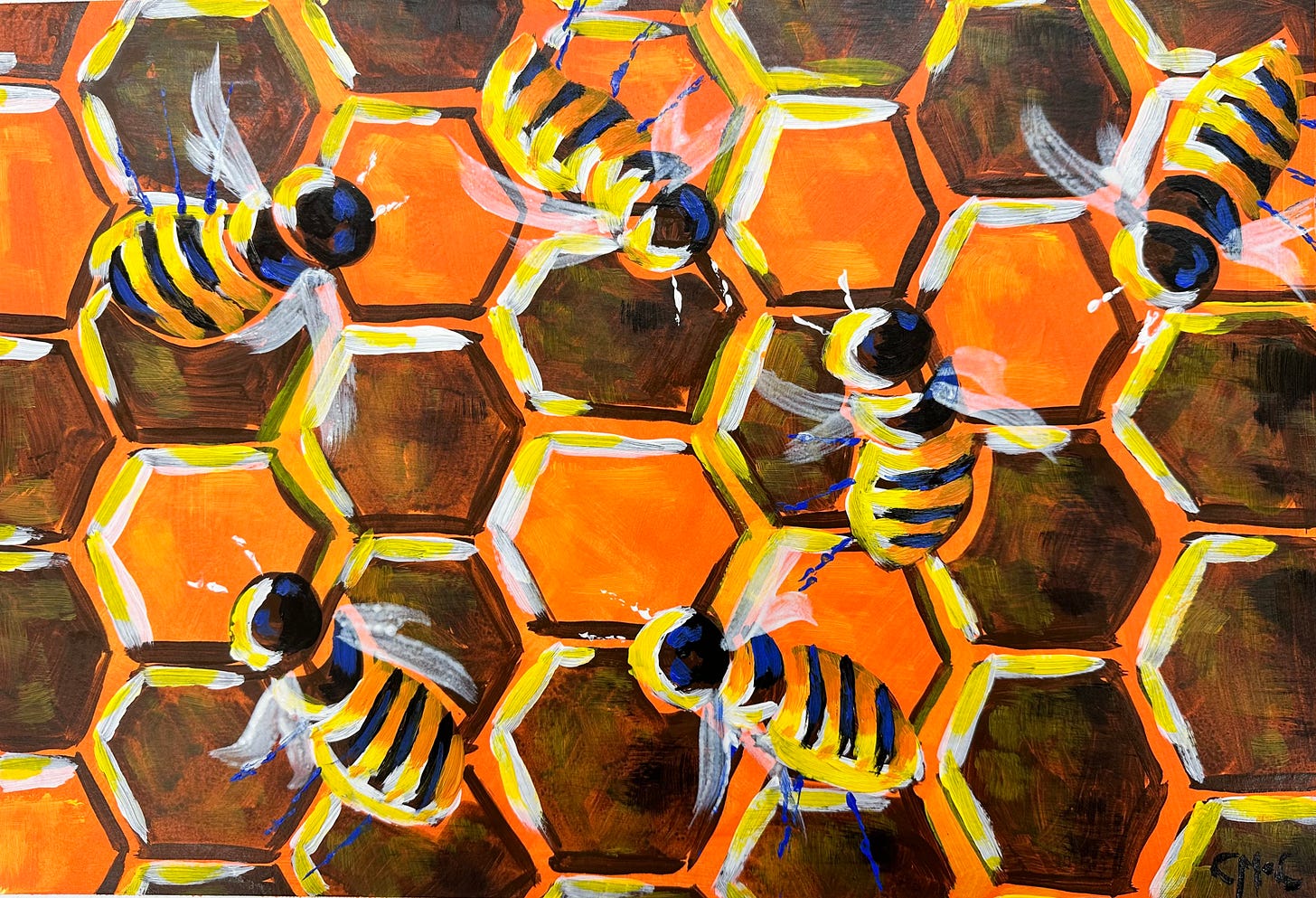
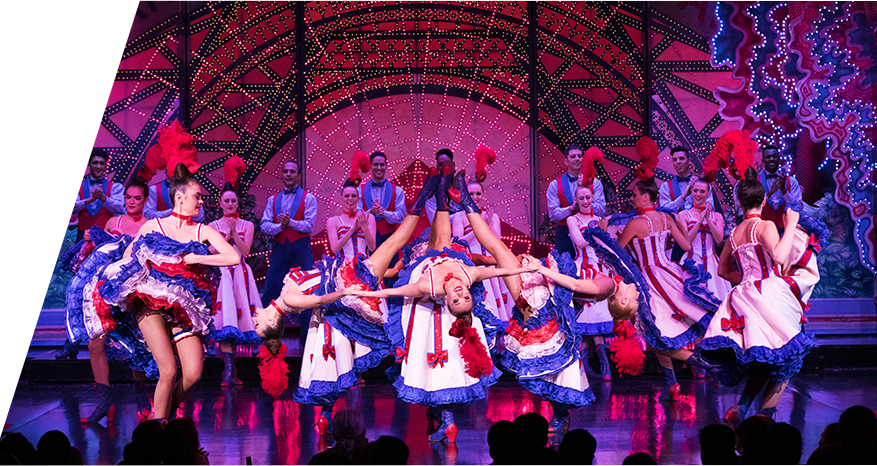
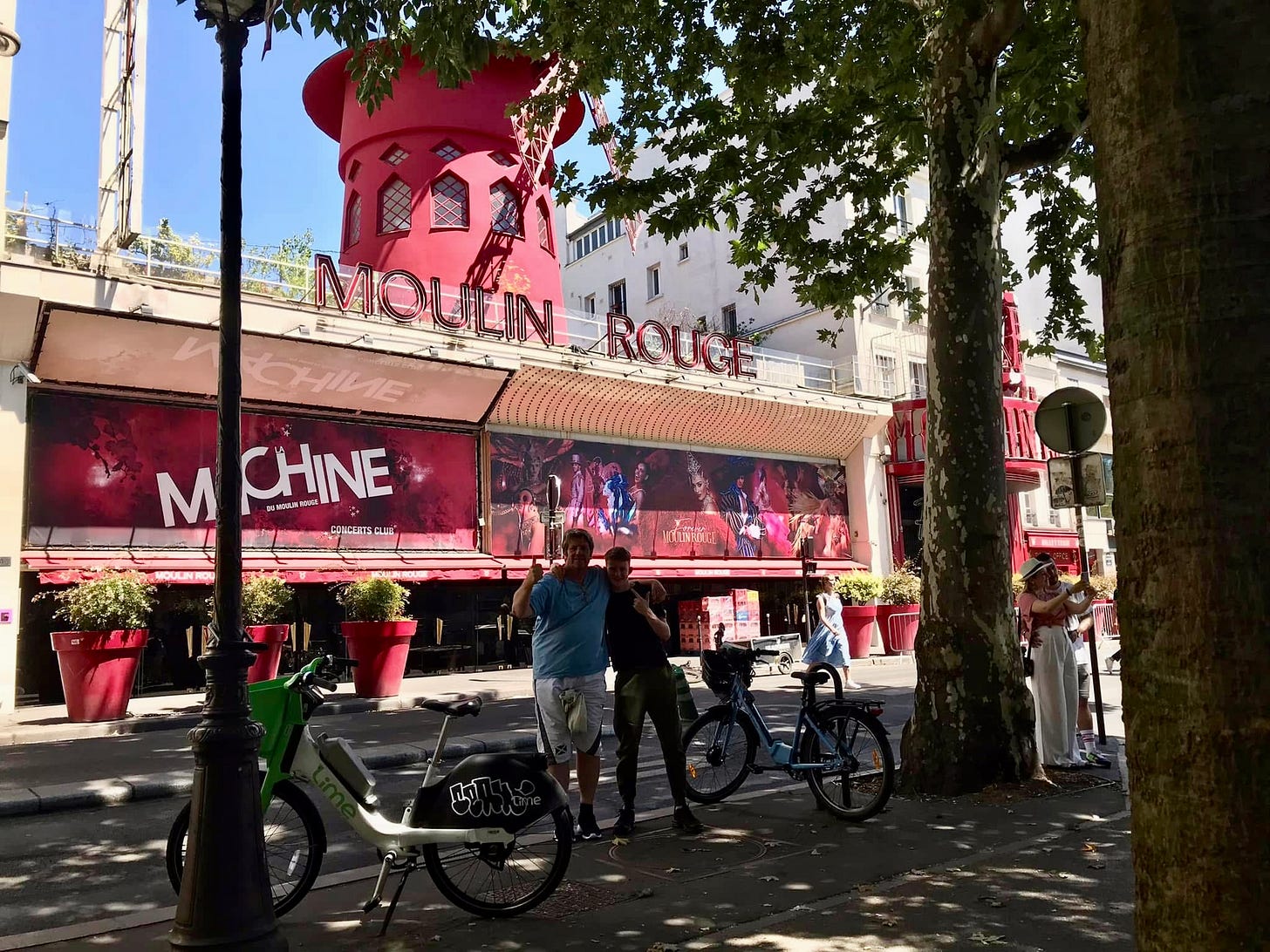
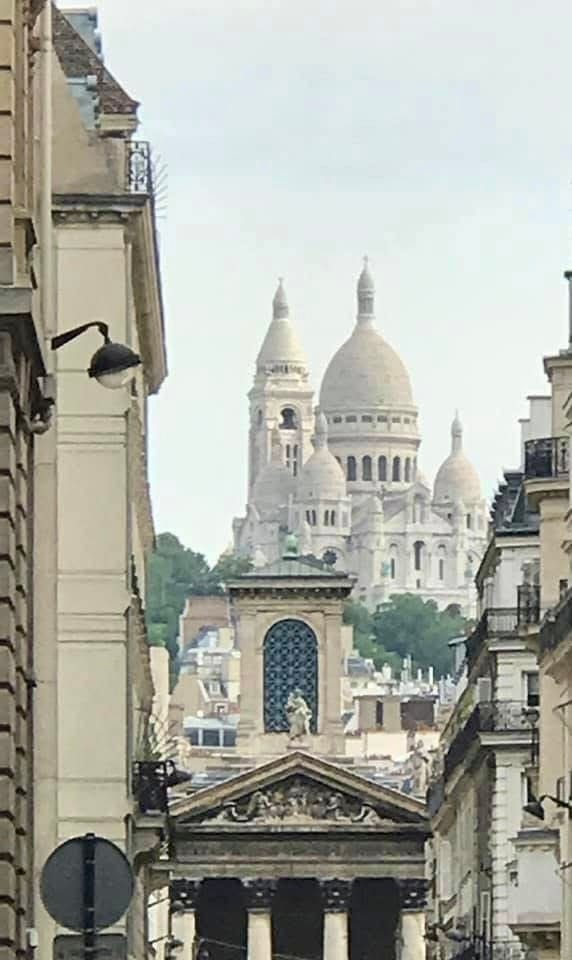
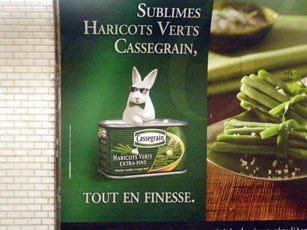
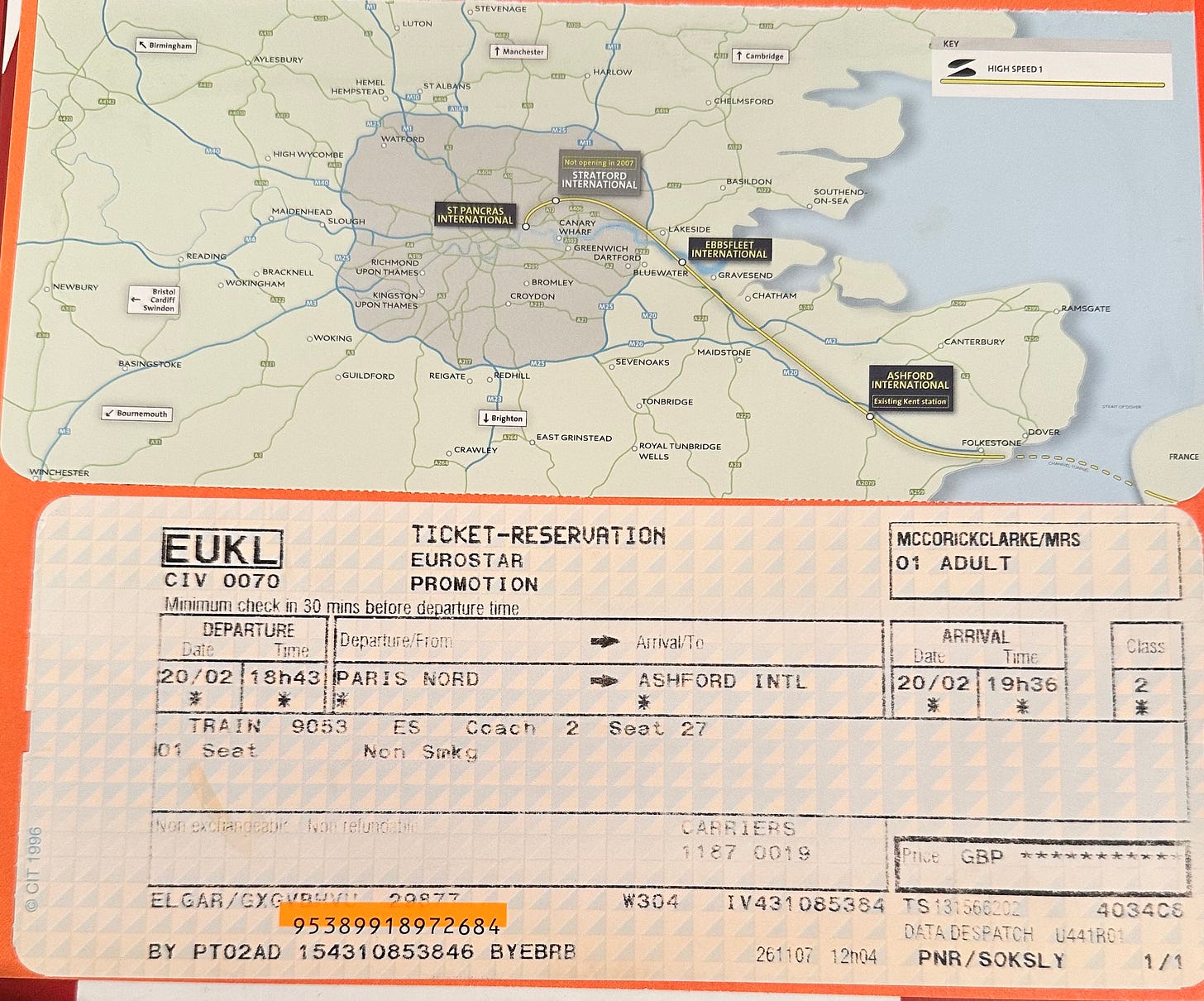
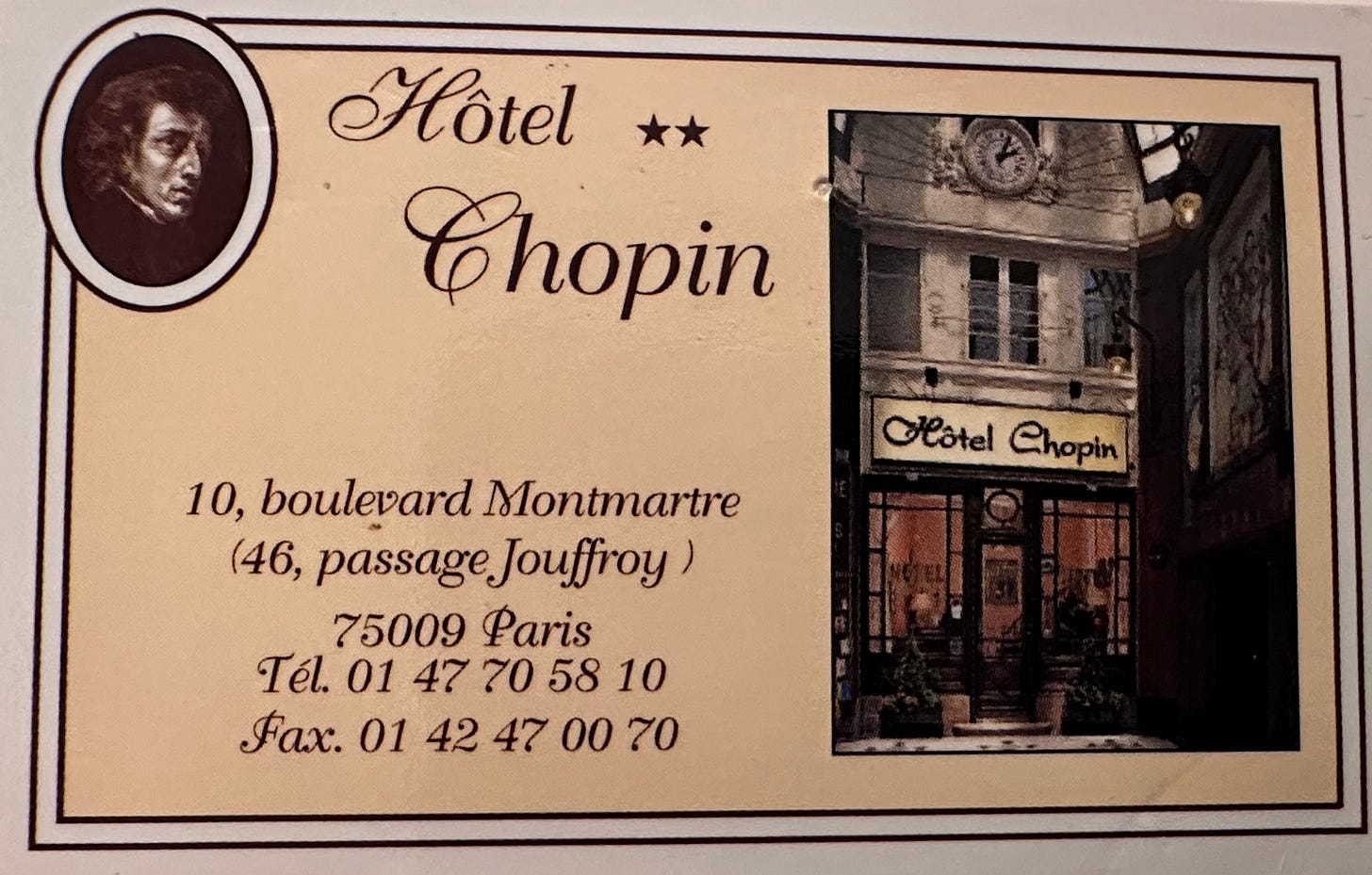








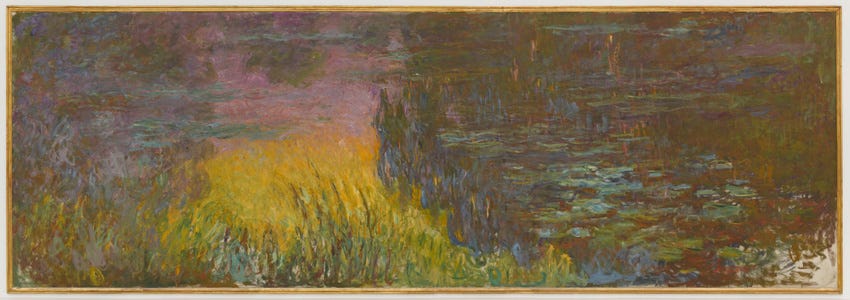


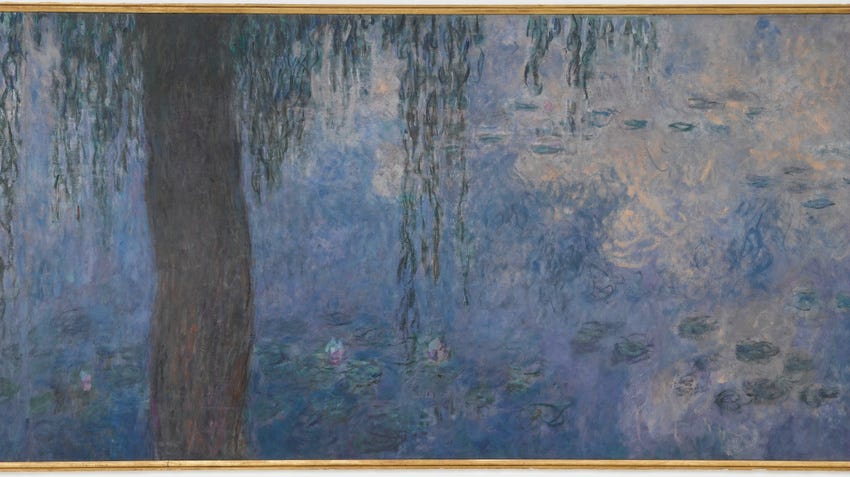

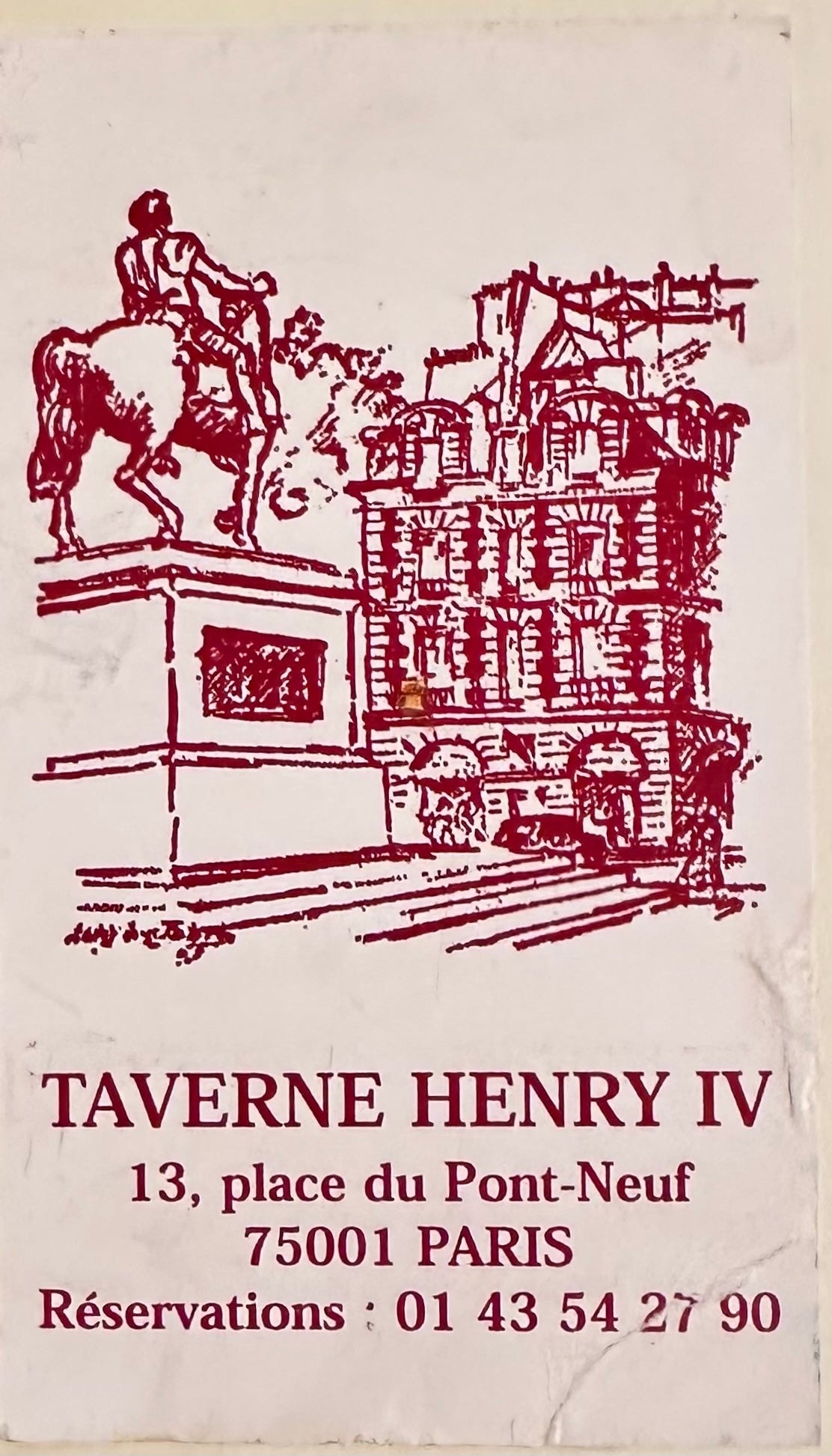

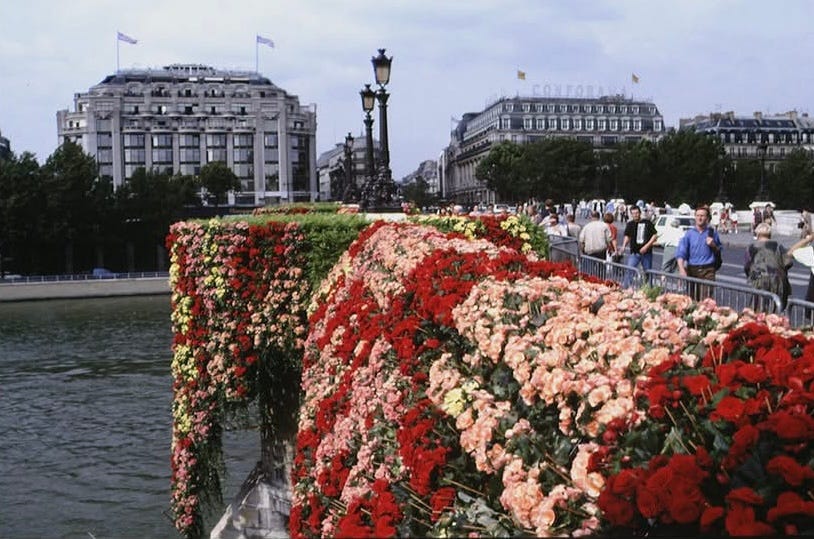


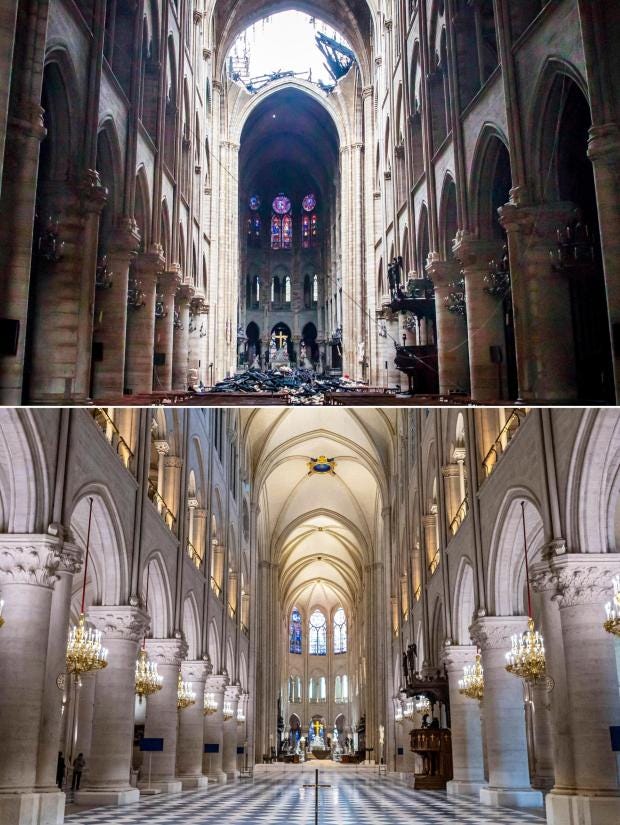





What a fabulous post. It's got me yearning to go back to Paris and feeling sentimental about previous trips there.
My first was when I arranged a surprise weekend away with a boyfriend who had recently dumped me in an attempt to win him back. It didn't work and I still can't believe that I did such a foolish thing and that he agreed to go!
My ex husband arranged a surprise anniversary trip one year and drove us to Paris. We arrived on the outskirts and then asked me to give him directions to the hotel near Les Invalides. We didn't have a map and the only help I got was - head for the Eiffel Tower - which wasn't in the least bit helpful but amazingly we eventually found our hotel.
My current husband proposed to me in Paris. It was going to be on the top of the Montparnasse tower with the Eiffel tower in the background but we'd had 'words' that evening so it didn't happen. The following day he got down on one knee by the round pond in the Jardin de Luxembourg which was much more romantic. Happy memories.
Wishing you a happy new year and look forward to reading more of your lovely posts. xx
Happy New Year, Caroline! What a gorgeous post 💫